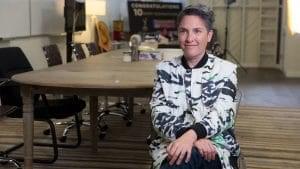
By now, you’d be hard-pressed to find someone who isn’t aware of Hollywood’s female director problem. The hot topic has taken on new resonance in the age of #MeToo, but it’s an issue that’s as old as the hotshot dudes running the biz and as unshakable as their antiquated boys’ club biases. Half the Picture, Amy Adrion’s no-frills documentary, offers a diligent, straightforward overview of the innumerable obstacles facing today’s female directors, both aspiring and accomplished.
Breaking the issue down by theme, Adrion intercuts interviews with the usual suspects — Ava Duvernay, Jill Soloway, Lena Dunham, Gina Prince-Bythewood, Miranda July, Kimberly Peirce, Catherine Hardwicke, and a slew of others — addressing everything from career launches, to sexism on set, to the need for female critics, to the eternal question of meshing work with motherhood. It’s a hell of a lot to consider and convey in 90 minutes, and covering the ground Adrion does is an admirable feat. But in prioritizing efficiency over complexity, the film merely skims the surface of each of its talking points, leaving little space for thorough analysis.
It doesn’t help that many of the film’s insights and stories — abysmal charts and numbers, barriers to entry, misogynistic mores — are already in the familiar foreground of discussions surrounding women in film. Make a cursory Google search for any of the topics introduced and you’ll find much deeper, more nuanced analyses than any that the film finds the space to put forward. This isn’t fully Adrion’s fault; paradigms shift quickly these days, and any work that attempts to take a precise measure of contemporary conditions is apt to feel a little stale by the time it’s consumed.

“The most crucial vein of thought in Half the Picture is also its most empirical: the vital role of money…”
The most crucial vein of thought in Half the Picture is also its most empirical: the vital role of money. Limited access to resources, the film demonstrates, will not only hinder production, but will also warp and mar work that does get created. When considering cinematographers to collaborate with on Transparent, a young director named Nisha Ganatra says, she was surprised to find that the male DPs’ reels she reviewed were markedly better than the women’s. But of course they would be uneven, Ganatra later realized; the men were the ones who had had access to financing, which meant higher caliber productions, fancier equipment, more time, more crew members, more flexibility. Film is an arena in which showcasing talent is a lot easier when you’ve got the funds to do so. (In the end, Ganatra opted to hire one of the female DPs despite an inferior reel.)
Accepting this thesis — that monetary opportunity dictates strength of output — activates a practical solution to the dearth of female directors: invest in women. It’s as worthy and cogent a message as any, elegantly highlighted by the all-female crew working on Half the Picture who Adrion periodically pulls out to display. Though lacking in rigor, the film is nonetheless an urgent, persuasive inquiry into an infuriating reality that, hopefully, we won’t have to be fighting much longer.
Half the Picture (2018) Directed by Amy Adrion.
Grade: B
